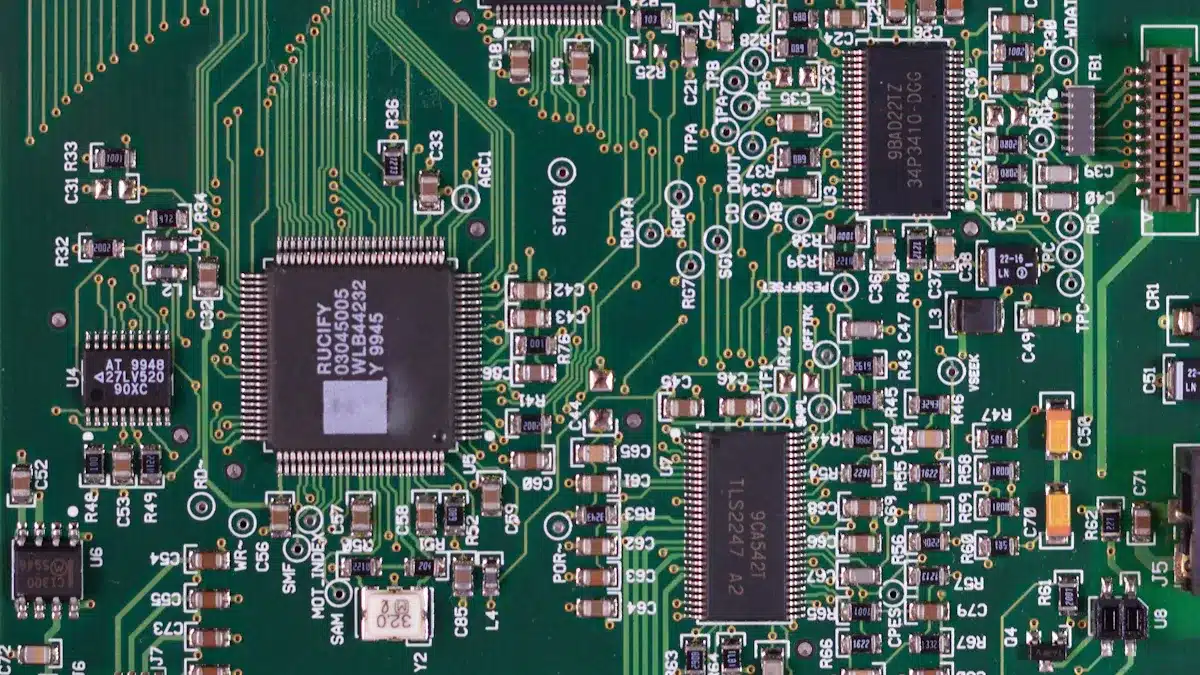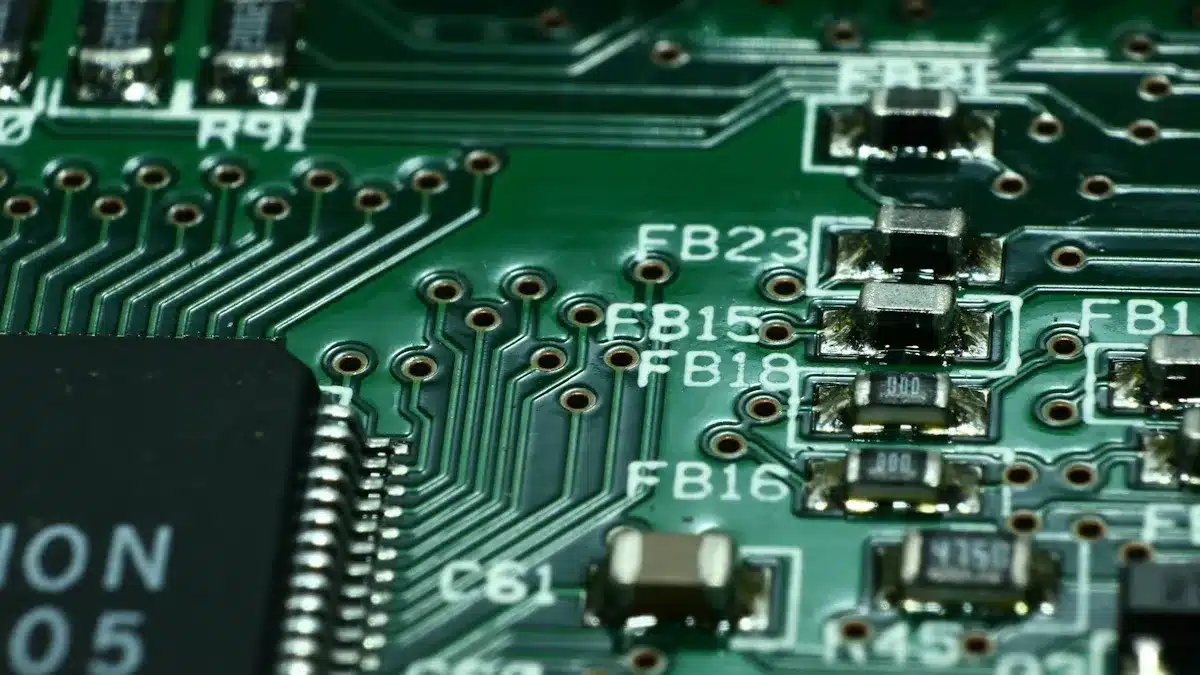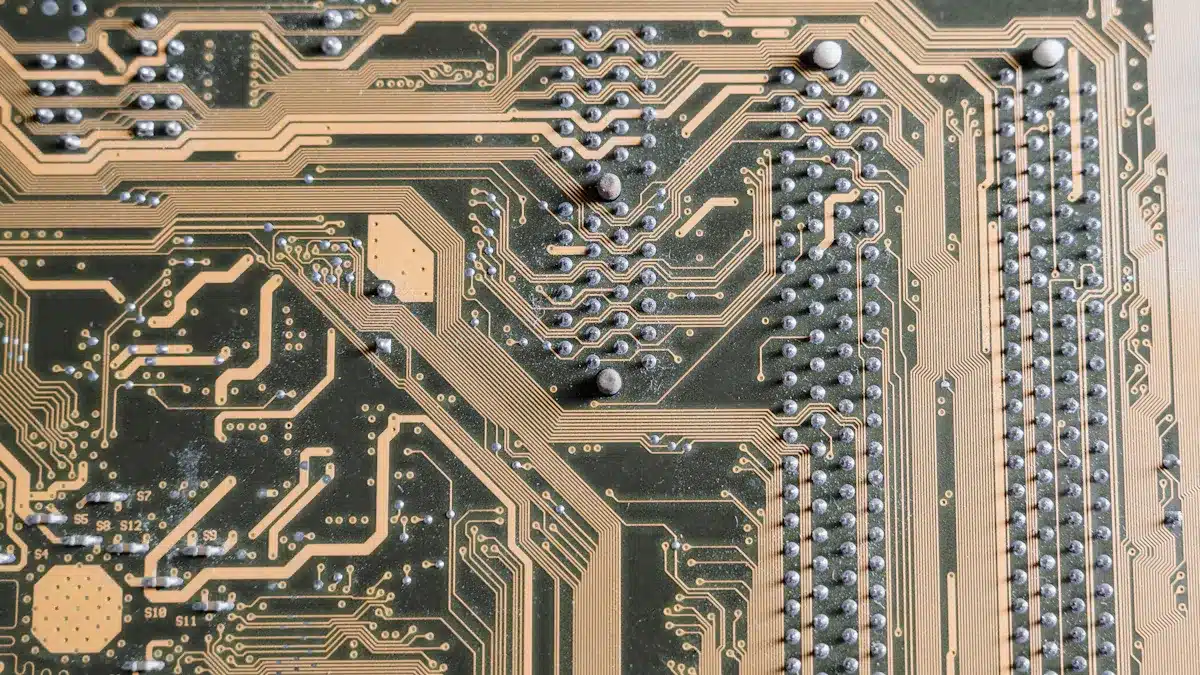
Choosing the right printed circuit board design software is very important for your projects. The software you pick can affect how you work and the quality of your designs. When looking at different options, think about important things like features, ease of use, and price. A recent survey showed that professionals usually focus on skill level, important software features, how well it works with other tools, and budget when choosing printed circuit board design software. To help you make a choice, we will group tools into free and paid options.
Key Takeaways
Picking the right PCB design software is very important for your project. Think about features, how easy it is to use, and your budget when you decide.
Free tools like KiCad and EAGLE are great for beginners. They have strong community support and help users learn without spending money.
Paid software like Altium Designer and OrCAD has advanced features. These features make designs more accurate and faster. These tools are best for complicated projects.
Always try free options before buying software. This helps you find what works best for you without spending cash.
Community support is very important. Look for software with active user groups that can help and share resources.
Free PCB Design Software

When you start designing printed circuit boards, free software is a good option. These tools let you learn without spending money. You can use high-quality design software and get help from the community for fixing problems and learning. Many users like how these tools work with manufacturing services. This makes it easier to go from design to production. Online platforms also help people work together. Multiple users can design at the same time.
KiCad
KiCad is a free PCB design software that many students and new engineers like. It has strong features and a helpful user community. This makes it a top choice for many people.
Features and Usability
KiCad has many features that make it different from other free PCB design tools. Here’s a look at some key features in its latest version:
FEATURES | KiCad 7 | KiCad 6 |
|---|---|---|
Component Library | Cross platform ODBC connectivity, New Database library, Dynamic field search | N/A |
Schematic Capture | Wire drawing mode cycling, New Symbol Table functions, Orthogonal Part dragging | Grid alignment capability, Net class assignment |
PCB Layout | Text boxes, Footprint consistency checking, New DRC rule constraints | Physical Stackup editor, New dimension types |
Viewing Capabilities | 3D model linked to libraries | 3D Viewer improvements |
Simulation | New Spice Model Editor, Spice Model import | Spice simulation support expansion |
Data Transfer | Embedded data in PDFs, PDF hyperlinks | Altium Designer, CADSTAR import |
Users say KiCad is easy to use. Many find it simpler than other software, especially with the new updates. Some people think the user interface looks old, which can make it hard to learn. Still, KiCad is flexible and has 3D options that many users like.
Target User Base
KiCad attracts many different users, including:
Hobbyists
Students
Freelancers
Professionals in small companies
Its low cost and open-source nature make it good for many uses, from personal projects to professional PCB design.
EAGLE
EAGLE, made by Autodesk, is another popular free PCB design tool. It is known for its strong features and large component libraries. Many designers really like it.
Features and Usability
EAGLE is easy to use, which helps beginners learn PCB design quickly. Here are some important features:
Feature | Description |
|---|---|
EAGLE’s simple interface helps beginners learn PCB design quickly. | |
Extensive Component Library | It has a large library of components and symbols, plus options for custom libraries. |
Affordable Pricing | EAGLE has free versions for students and hobbyists, making it easy for those on a budget. |
Integration with Open-Source | It works well with platforms like Arduino, which helps with unique projects. |
Rapid Prototyping Capability | EAGLE is good for making simple to medium-complexity PCBs, allowing quick changes. |
Users say EAGLE is friendly and easy to use, especially for beginners and hobbyists. But, it does not have some advanced features found in tools like Altium Designer. This can limit its use for more complex projects. Users have noticed it can be slow on larger designs, especially on older computers.
Target User Base
EAGLE is popular with:
Beginners
Hobbyists
Electronics fans
Students
Aspiring engineers
Both KiCad and EAGLE show how popular open-source tools are in schools. As more students and new engineers use these tools, they become important for learning and growing in printed circuit board design.
Paid PCB Design Software

Buying paid PCB design software has many benefits. You get advanced features that improve your design work. These tools usually offer:
Speed: They make prototyping and routing faster.
Accuracy: Automated simulations help cut down mistakes.
Scalability: They can handle simple and complex projects.
Integration: These tools help make the design and fabrication process smooth.
Collaboration: They support teamwork from different places.
Paid software also gives you access to expert help without needing full-time staff. This support helps you simplify your product, find ways to improve, and fix design issues. Fast prototyping helps ensure your manufacturing stays on time, keeping your projects running smoothly.
Altium Designer
Altium Designer is a top choice for professionals in PCB design. It has many features for both individual engineers and big companies.
Features and Usability
Altium Designer provides a complete environment for schematic entry, layout, and simulation. Here are some key features:
One easy interface for design to manufacturing
Advanced tools for collaboration and feedback
Interactive routing for fast and multi-board designs
Detailed manufacturing documents and BOMs
A huge library with over 200K components and templates
Users give Altium Designer high marks for how easy it is to use. Recent surveys show:
Aspect | Rating |
|---|---|
Support Quality | 8.4 |
8.3 | |
Ease of Setup | 8.8 |
Overall Rating | 4.6 |
Customer Satisfaction | 98% |
Many users like how well the features work together and how it automates tasks that often cause errors. This software adjusts well to changes in design needs.
Target User Base
Altium Designer mainly targets individual engineers and large companies. Its flexibility makes it good for both small and large projects, appealing to many users in the field.
OrCAD
OrCAD is another strong PCB design tool with special features.
Features and Usability
OrCAD offers a customizable workflow and real-time feedback. Key features include:
Key Features of OrCAD |
|---|
Customizable workflow |
Real-time feedback |
Unified parts search and libraries |
Design reuse |
Hierarchical design |
DFM rules wizard |
Advanced simulation capabilities |
Powerful layout tools |
Detailed manufacturing outputs |
These features make OrCAD popular among professionals who need precision and flexibility in their designs.
Target User Base
OrCAD is used in many industries, including:
Industry | Percentage |
|---|---|
Electrical/Electronic Manufacturing | 12% |
Information Technology and Services | 9% |
Computer Hardware | 7% |
Higher Education | 5% |
This wide range of users shows how adaptable OrCAD is across different fields.
DipTrace
DipTrace is known for being easy to use and having strong features.
Features and Usability
DipTrace has several key features that attract PCB designers:
Feature | Description | Benefits |
|---|---|---|
Differential Pair Routing | Keeps impedance control by routing two traces with a set gap. | Reduces signal reflection and noise. |
Library Management | Manages component libraries, including custom parts and 3D models. | Makes the design process smoother and ensures parts fit correctly. |
3D Visualization | Shows components in 3D to spot collisions and check fit. | Helps avoid manufacturing problems and ensures it can be made. |
Export Options | Allows exporting in formats like Gerber, ODB++, and DXF. | Eases communication with manufacturers and cuts down errors. |
Users find DipTrace easy to use, especially beginners and intermediate users. However, some have issues with its library interface.
Target User Base
DipTrace attracts many users, including hobbyists, students, and professionals. Its mix of features and ease of use makes it a strong choice in the PCB design market.
In conclusion, picking the right PCB design tool is very important for your projects. You can choose free tools like KiCad and EAGLE or pay for software like Altium Designer and OrCAD. Each tool has special features and is made for different users.
Think about these things when you decide:
Factor | Description |
|---|---|
User-friendliness | How easy the software is to use, which matters for both new and experienced users. |
Cost | The money aspect, where users compare free and paid options. |
Community support | The presence of user groups that offer help and share resources. |
Feature sets | The variety of functions the software provides, which can affect your choice. |
Before you buy software, try free options first. This way, you can find what works best for you without spending money. Happy designing! 🎉
FAQ
What is PCB design software?
PCB design software helps you make layouts for printed circuit boards. It lets you create schematics, place components, and prepare files for making the boards. You can pick from free or paid options based on what you need.
Can I use free PCB design software for commercial projects?
Yes, many free PCB design tools, like KiCad and EAGLE, can be used for commercial projects. Always check the specific rules to make sure you follow any limits.
How do I choose the right PCB design tool?
Think about your skill level, how complex your project is, and your budget. Look at features, ease of use, and community support. Trying free options first can help you find what works best for you.
Is it difficult to learn PCB design software?
Learning PCB design software can be hard, but many tools have tutorials and community help. Start with easy-to-use options like KiCad or EAGLE to slowly build your skills.
What are the benefits of paid PCB design software?
Paid PCB design software usually has advanced features, better support, and improved teamwork tools. These benefits can make your design work easier and help you handle complex projects better.
See Also
Choosing the Right PCBA Manufacturer for Your Business Goals
Finding the Ideal PCB Prototype Manufacturer for Your Project
Effective Strategies for Choosing Top PCB Assembly Services